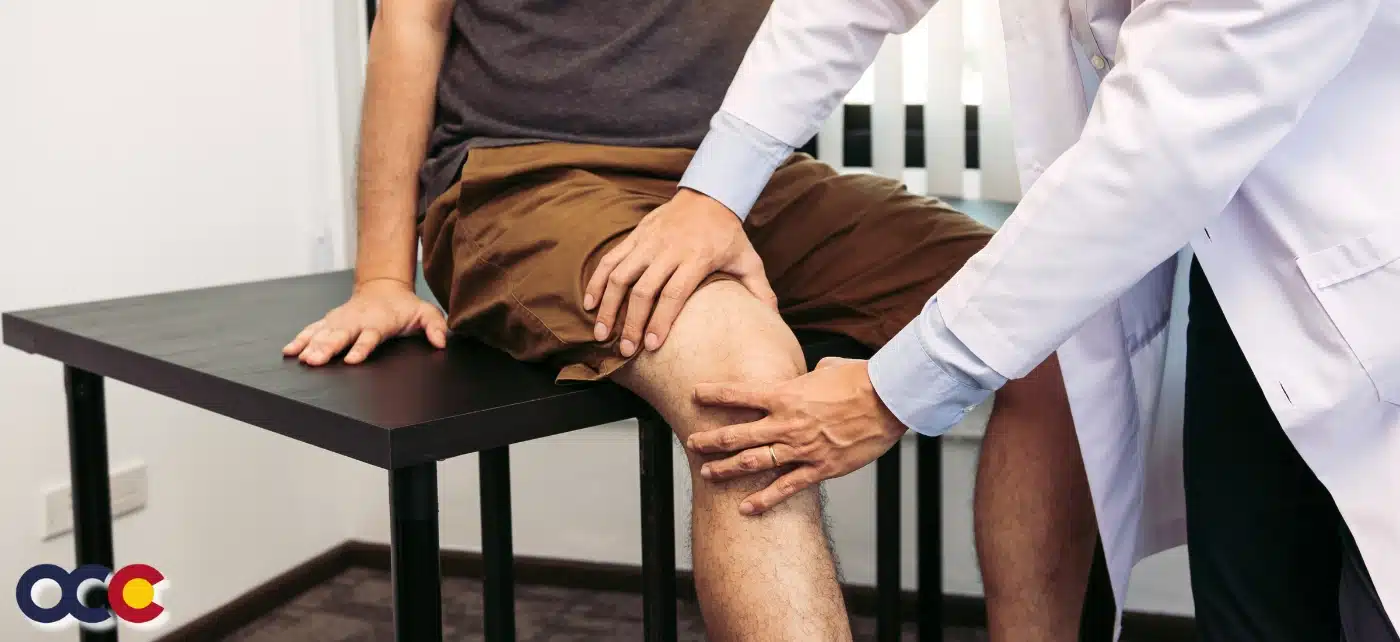Did you know that in the past 60 years, it has snowed on either Halloween or November 1st a whopping 41 times? While it looks like we’ll buck the trend this year with forecasts in the 70s for both days, winter is still coming! Maybe you can even feel it. Are you one of those people who can tell when a storm front is coming into Colorado even before the local weatherperson can? If so, you know that increased pain from knee arthritis serves as a pretty consistent weather barometer!
It is, in fact, the barometric pressure that causes many sufferers of knee arthritis (or any other arthritis) to feel more joint pain as the pressure changes and a weather pattern moves in.
But what is that pain actually doing to your joints? In the first of a three-part series, we’ll examine how knee arthritics impacts your joints, provide non-surgical treatment options, and look at the option of knee replacement surgery and rehabilitation.
What is knee arthritis?
Arthritis is joint inflammation that causes pain, swelling and stiffness. Knee arthritis is a particularly common form of arthritis and can be especially painful and can really limit your ability to be active because of the load-bearing nature of the knee joint.
While there are multiple types of arthritis, osteoarthritis is the most common type of arthritis in the knee. Osteoarthritis causes the knee cartilage to slowly wear down, and as this happens, it becomes damaged and rough. It’s known as a degenerative condition because the ongoing wear on your cartilage causes it to degenerate and eventually wear away.
Eventually there is no more cushion left between bones, and the bone-on-bone friction causes a great deal of pain as well as bones spurs.
What causes knee arthritis?
Osteoarthritis is typically causes from wear and tear on the body. This can be exacerbated by overuse or injury, and is more prevalent in patients who also have rheumatoid arthritis. When knee arthritis develops, it’s usually in both knees. It’s also more common among after age 40, and also among women, especially after age 50.
In the event of a knee injury, it’s referred to as posttraumatic knee arthritis. When the knee is injured, makes the joint less stable which often leads to additional wear and tear that, over time, turns into arthritis.
Can you cure knee arthritis?
There is not a cure for knee arthritis, but it’s still imperative to get treatment. There are many treatment options that contribute to the two most important things: 1. Reducing pain so that you can be active. 2. Minimizing or slowing the long-term damage to your cartilage and bone.
If you have knee pain and think it might be knee arthritis, learn about non-surgical treatment options, or contact our office to schedule a consultation.

















